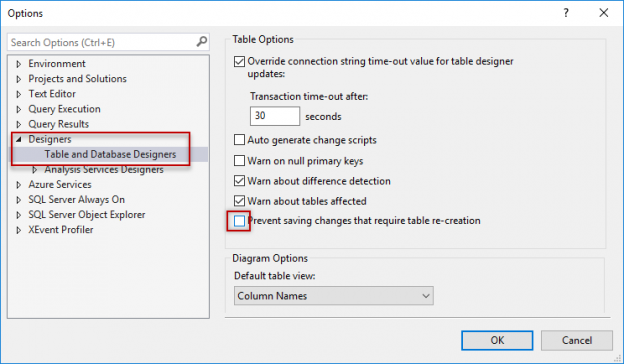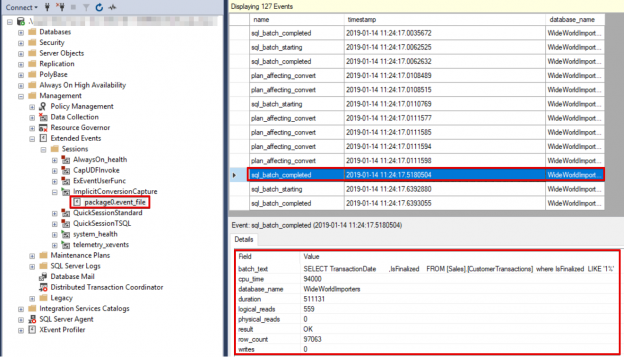In this article, we will explore database backup validation by with SQL restore database operations using DBATools.
Read more »


In this article, we will explore database backup validation by with SQL restore database operations using DBATools.
Read more »

This article will cover the SQL SELECT INTO statement including syntax, parameters and use with multiple tables, filegroups and a WHERE condition
Read more »

In this article, we will explore various SQL Convert Date formats to use in writing SQL queries.
Read more »

This article will cover SQL restore database operations using the open-source PowerShell module, DBAtools, and will cover commands for backup restoration using the command Restore-DBABackup with many various permutations like restoring from file, separate directory, renaming databases, norecovery options and more
Read more »

A common task for newbies is to learn how to do a SQL convert date and work to convert them date to other data types or covert other data types to Date.
Read more »

This article is about basics of conventional SQL unit testing concepts and its implementation through tSQLt, a highly acclaimed SQL unit testing framework because of being written in T-SQL and its built-in design support for SQL SQL unit testing needs ranging from simple to complex scenarios.


This guide is all about provisioning SQL Server 2019 using Azure Container Instance (ACI), including the installation and configuration. In this article, we talk about the Azure Container Instance (ACI), the Azure PowerShell module, installation and configuration of SQL Server using the Azure PowerShell module, and automation of installation and deployment using templates.
Read more »

We have a convenient tool for working with PowerShell and SQL Server when using Invoke-SqlCmd. As we saw when running statements, we can run DDL and DML changes with the command without writing our own custom scripts. This carries advantages when we need to quickly develop with PowerShell, but it can come with drawbacks on security if we’re not careful how we use this function. We’ll look at security when using this function by starting with a few examples of what we can do when we have unlimited access along with how we can design to limit our environment to be strict with our use of this tool.
Read more »

In my earlier PowerShell SQL Server article, SQL Database Backups using PowerShell Module – DBATools, we explored the importance of a disaster recovery solution for an organization. Microsoft offers various disaster recovery solutions in SQL Server.
Read more »

In this article, we will review PowerShell SQL Server module DBATools to identify IDENTITY columns about to reach the threshold.
Read more »

This article will be first article of series for SQL database backup and restoration using DBAtools, a powerful open source library of PowerShell automation scripts.
Read more »

PowerShell features many one-line commands for working with SQL Server, one of which is Invoke-SqlCmd. This tool can be useful in many development contexts where we need to quickly execute scripts or test code and it helps to know some of the parameters we’ll often use. In addition, because we may want a custom script using some of the underlying .NET objects, we’ll look at an alternative where we will be able to create a custom PowerShell script that connects to SQL Server in order to run commands. The latter can be useful because one-line scripts have a tendency to change in future versions of PowerShell and working with the library directly can sometimes avoid this challenge.
Read more »

The PowerShell execution policy was developed with a vision to be friendly to administrators, and at the same time, be accessible to end users. More than the former, the latter goal was a little challenging to pull off, considering that convenience is, more often than not, inversely proportional to security.
Read more »

In this article, we will explore the DBAChecks PowerShell SQL Server Module. We can use the DBAChecks module to validate SQL Server instances using the various modules. We can also perform more than 100 configuration reviews using it.
Read more »

Using Python SQL scripts is a powerful technical combination to help developers and database administrators to do data analytics activities. Python provides many useful modules to perform data computation and processing of data efficiently. We can run Python scripts starting from SQL Server 2017. We can create the ETL solutions to extract data from various sources and insert into SQL Server.
Read more »

In this series of articles on SQL Server FILESTREAM (see TOC at bottom), we explored various ways to store unstructured data in the file system with the metadata in SQL Server tables. If we have a large number of objects in the file system, it is advisable to use the fast disk for storage purpose. It is faster and provides better IO in comparison with the traditional file system.


Power BI Desktop helps to visualize complex data with the help of inbuilt and custom visualizations. It allows integrating data from the various data sources and preparing visualization from it.
Microsoft recently integrated the Python programming language in the Power BI. Python is a powerful object-oriented language and is used by the data analyst and scientist to analyze complex datasets. We can now use the Python as a preview feature in the Power BI August 2018 release onwards. We can now use Python scripts to generate custom visualization. The combination of these technologies is akin to 1 + 1 = 3 or like the famous ad for Reese’s Peanut butter cups, when chocolate was introduced to Peanut Butter 


With the introduction of SQL Machine Learning Services, it is now possible to run Python Scripts from any SQL Server client such as SQL Server Management Studio. In addition to directly running the Python Scripts on SQL Server Clients, you can write Python Code on native Python editors and run it remotely on SQL Server using Python clients for SQL Server.
In this article, we will see how to execute some of the basic Python functionalities within SQL Server Management Studio. The article provides an introduction to running basic Python scripts in SQL Server Management Studio.
Read more »

In this series of the SQL Server FILESTREAM (see TOC at bottom), We have gone through various aspects of this feature to store large size objects into the file systems.


Since we know that the SQL CTE (common table expression) offers us a tool to group and order data in SQL Server, we will see an applied example of using common table expressions to solve the business challenge of re-basing identifier columns. We can think of the business problem like the following: we have a table of foods that we sell with a unique identifier integer associated with the food. As we sell new foods, we insert the food in our list. After a few years, we observe that many of our queries involve the foods grouped alphabetically. However, our food list is just a list of foods that we add to as needed without any grouping. Rather than re-group or re-order through queries using a SQL CTE or subquery, we want to permanently update the identifier.
Read more »

In this article, we will discuss and learn basics and all details about SQL Server data type converting operations and also we will review the SQL CONVERT and TRY_CONVERT built-in functions with various samples. At first, we will explain and clarify syntax of the SQL CONVERT function and then we will learn how can we make data converting process numerical and date/time data types to character data.
Read more »

In this article, the latest in our series on Common table expressions, we’ll review CTE SQL Deletes including analyzing the operation before the delete, actually removing the data as well as organizing and ordering the deletes with CTEs.
Read more »

In CTEs in SQL Server; Querying Common Table Expressions the first article of this series, we looked at creating common table expressions for select statements to help us organize data. This can be useful in aggregates, partition-based selections from within data, or for calculations where ordering data within groups can help us. We also saw that we weren’t required to explicitly create a table an insert data, but we did have to ensure that we had names for each of the columns along with the names being unique. Now, we’ll use our select statements for inserts and updates.
Read more »

Common table expressions (CTEs) in SQL Server provide us with a tool that allows us to design and organize queries in ways that may allow faster development, troubleshooting, and improve performance. In the first part of this series, we’ll look at querying against these with a practice data set. From examples of wrapped query checks to organization of data to multiple structured queries, we’ll see how many options we have with this tool and where it may be useful when we query data.
Read more »

This article will provide an overview of SQL Server implicit conversion including data type precedence and conversion tables, implicit conversion examples and means to detect occurrences of implicit conversion
Read more »© 2025 Quest Software Inc. ALL RIGHTS RESERVED. | GDPR | Terms of Use | Privacy